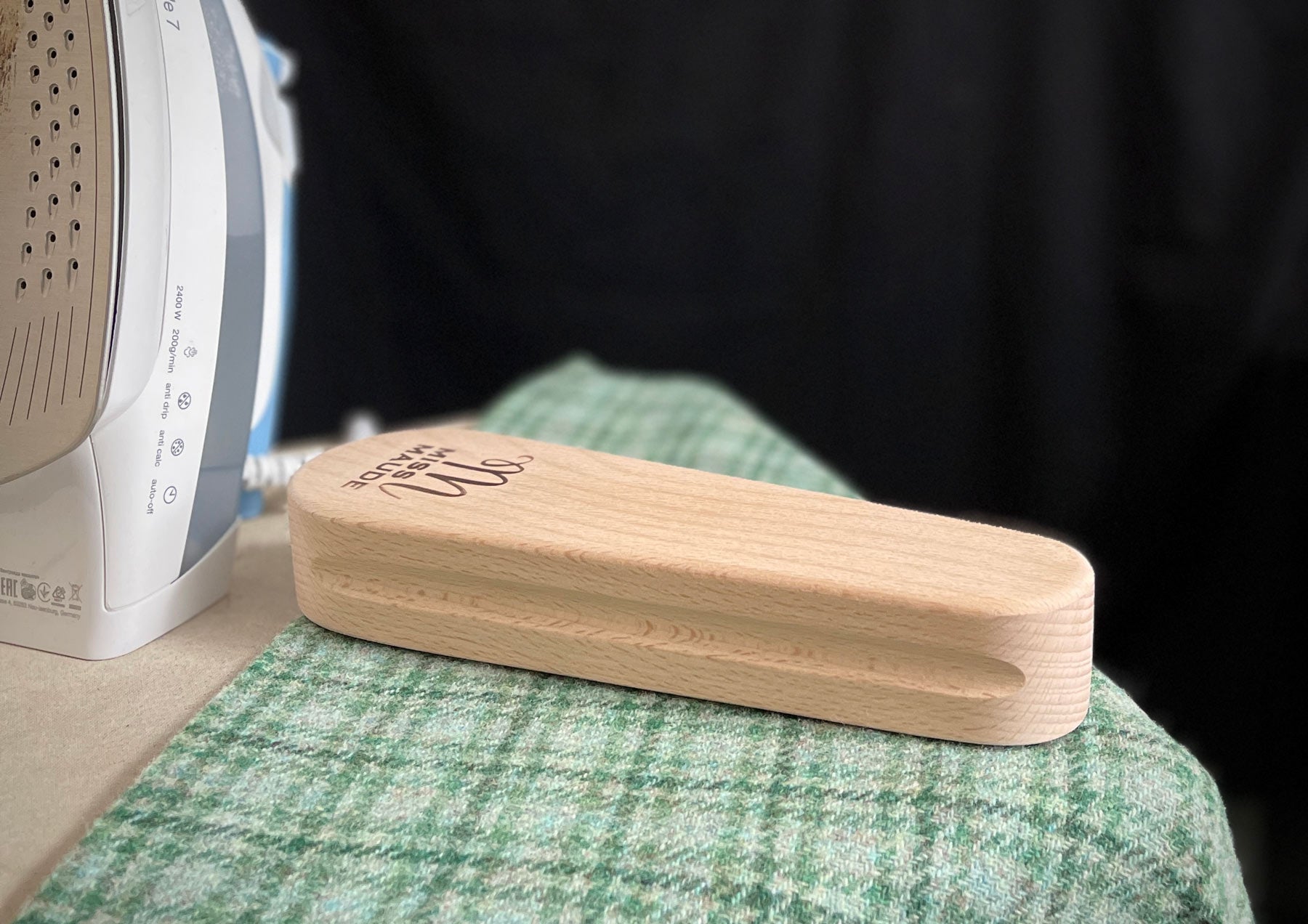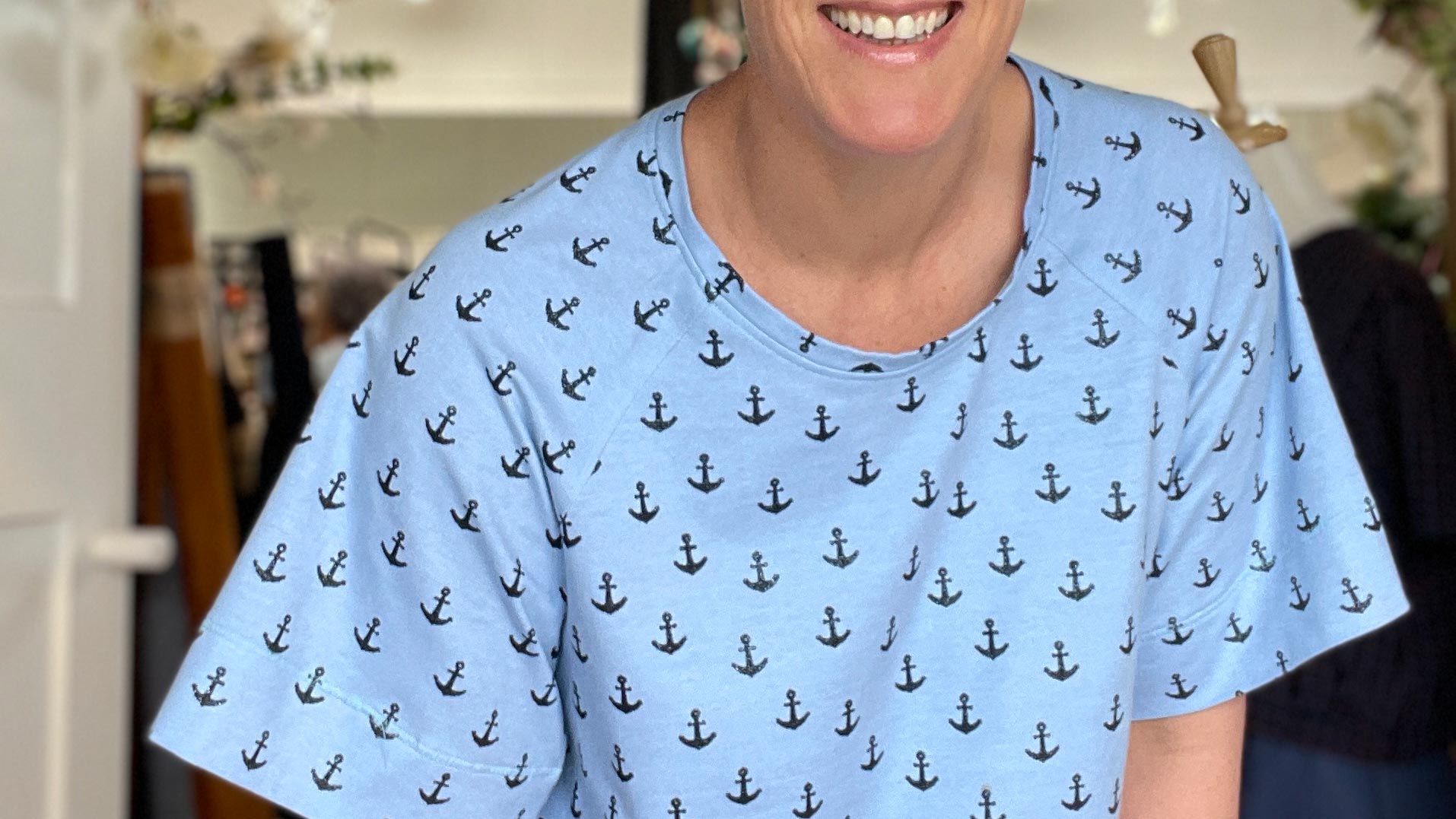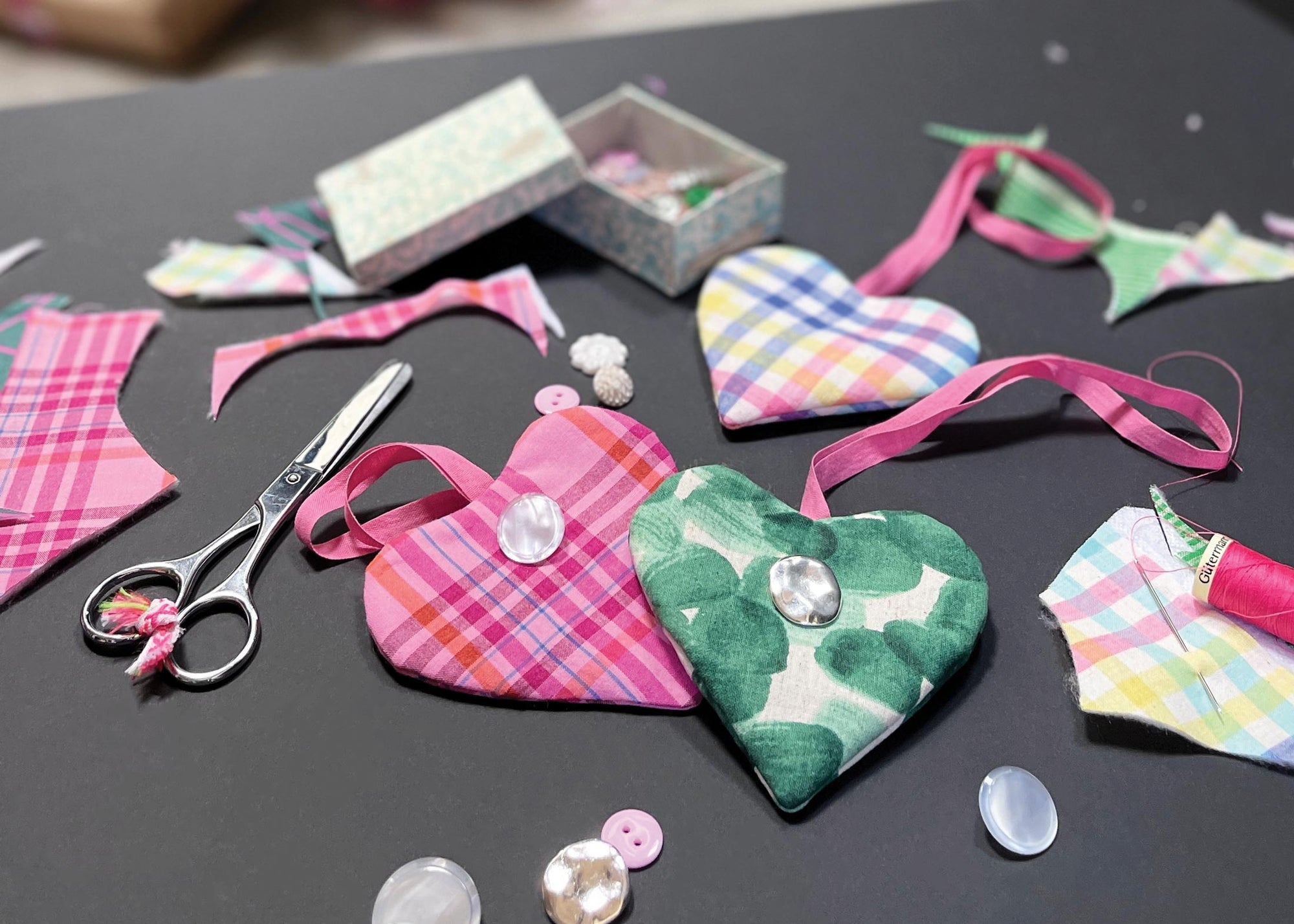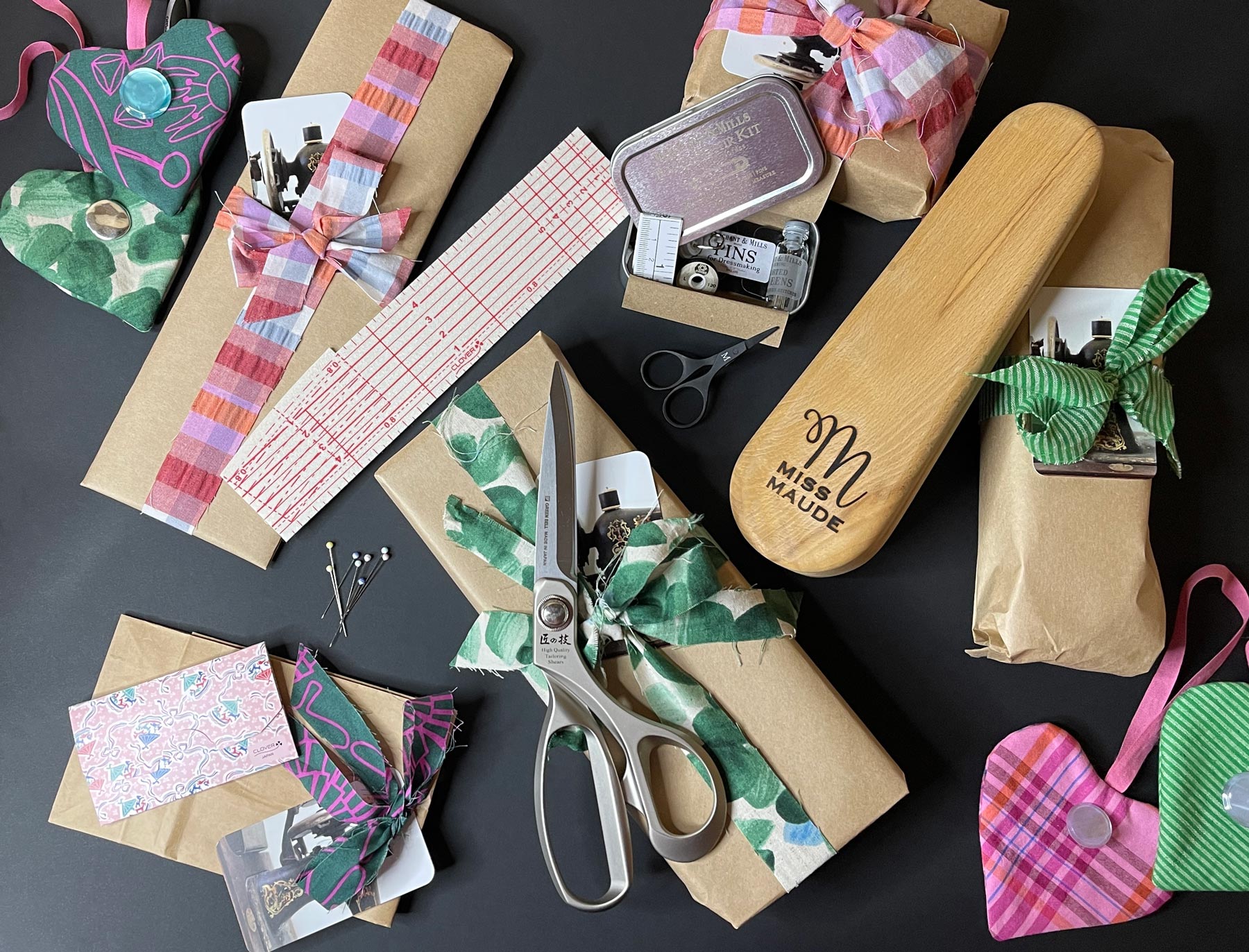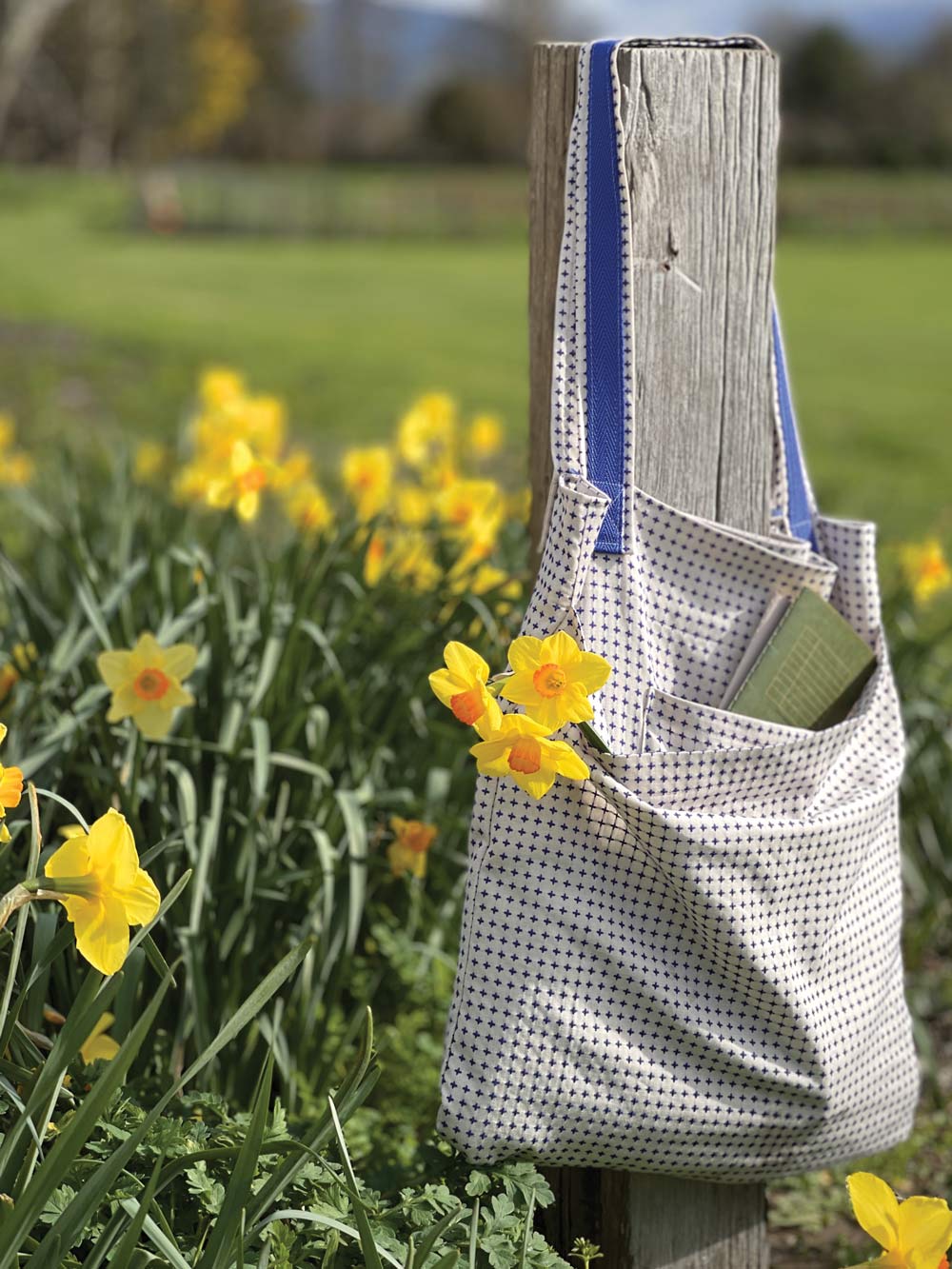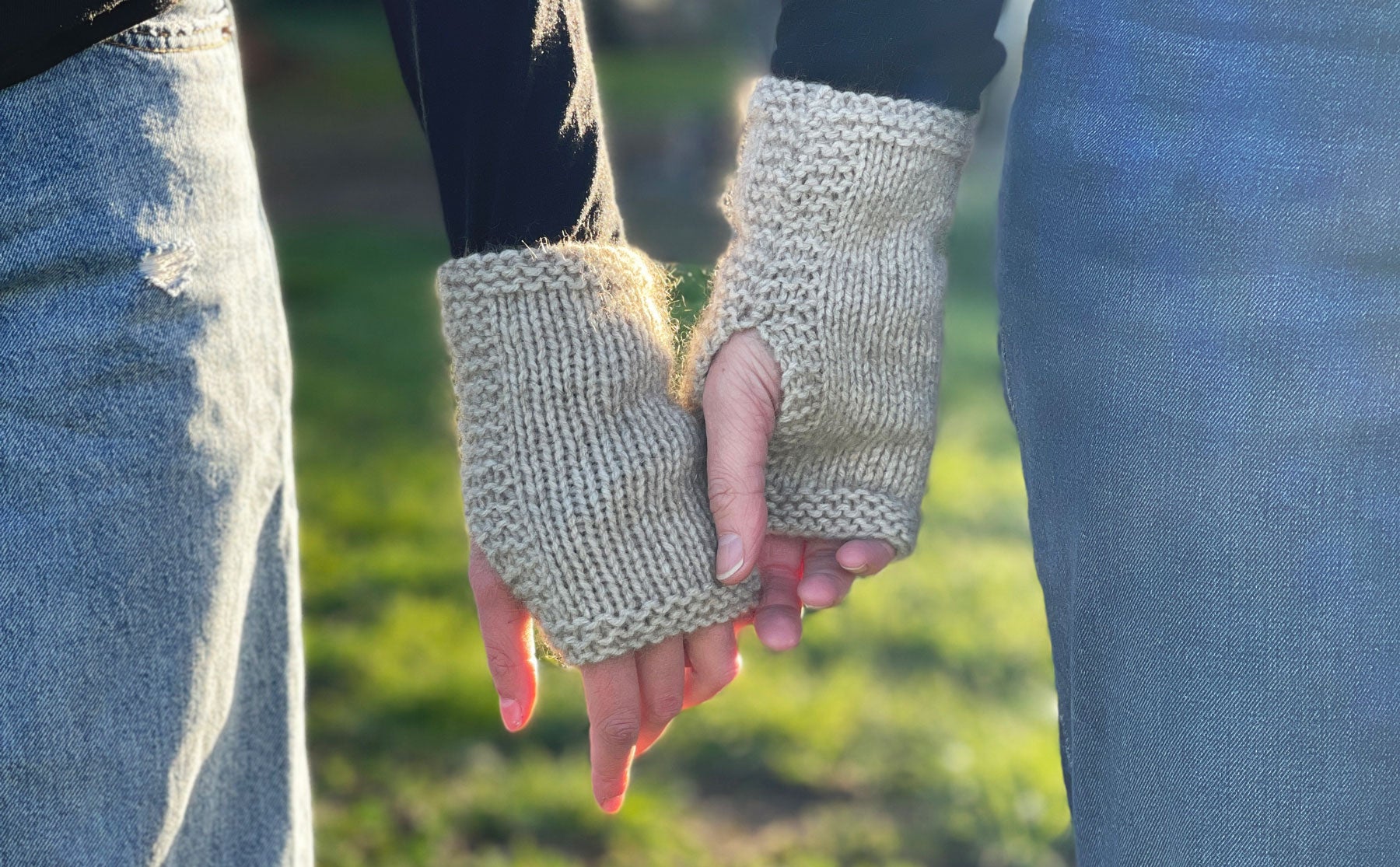
A Tailor's Clapper is a simple but effective tool to have in your sewing kit. Once you've had the pleasure of using one, you'll wonder how you ever did without! But what is a Tailor's Clapper you ask?
What is a Tailor's Clapper?
It is a piece of hardwood, shaped and sanded so it is smooth and easy to hold. It is used for pressing while dressmaking or tailoring resulting in lovely crisp, flat seams.
A Tailor's Clapper was originally used in tailoring (hence the name) because of how well it works on woollen fabrics while preventing scorching the fabric. Over the years the humble wooden clapper has made its way into dressmaking and is also popular with quilters - a well pressed seam is important for an accurate quilt.
The team here at Miss Maude find it invaluable for making Jeans , tailoring, sewing coats and jackets, when working with thick fabrics, when sewing delicate fabrics and also those of use who moonlight at quilters love it when piecing quilt tops!

How to use a Tailor's Clapper?
It is a very simple tool to use. Finger press the seam open, apply plenty of steam to your seam (without the iron touching the fabric) and then press the clapper to the seam. Hold the clapper on the seam until all the steam has been absorbed and the seam cooled - normally five seconds or so. Have an experiment and see what works on the seam you are pressing - also check to make sure your fabric can handle the heat and steam. Thicker, bulkier fabrics may need you to hold the clapper to the seam for a little longer.
How does it work?
A clapper works by absorbing the steam (and some heat) from the fabric - thus setting the fibres in the pressed form.

When we apply steam to the fabric, the heat and steam soften the fibres making them quite mailable. As the fibres cool, they start to set in the shape. By holding the clapper on your seam until it cools, the fibres stay in the shape of a crisp, flat seam. They have less chance of bouncing back towards an unpressed seam form. An iron doesn’t allow for the fibres to stay flat while they cool and they will eventually bounce back to their original shape.
You can see in the images below the difference a Tailor's Clapper makes on the pressed seam.

A wool fabric works really well with a clapper - you can get a firm press without scorching the fabric or seeing that shiny 'over pressed' look. Using a substantial amount of steam on the wool and using the clapper, prevents any of this from happening and sets the seams beautifully flat.
Another benefit of using a clapper, is that it sets the seam flat for longer. Natural fibres will always want to revert back to their natural shape, so pressed seams will start to 'relax' over time. We experimented over a 24 hour period and we found that the seam treated with a clapper stayed much flatter than just a steamed seam.

Using a Tailor's Clapper with Delicate Fabrics.
Using the combination of finger pressing, steam and a clapper on delicate fabrics or seams that are on the bias is also beneficial. An iron can put undue strain on the fabric and pull at the stitches and the delicate fibres. A clapper is less likely to put this strain on the seam.
About Our Tailor's Clapper
Our clappers have been designed by us - we spent many hours trialling prototypes to get them just right! We use sustainably grown FSC European Beach for best results. Our Tailor's Clapper is shaped to cater for varying hand sizes, rounded edges for comfort, and grooves running the length of each side to easily grip the clapper.
If you've decided you now need this in your sewing arsenal, you can grab your own Tailor's Clapper here. It would also make a delightful gift!
SAVE IT FOR LATER....


